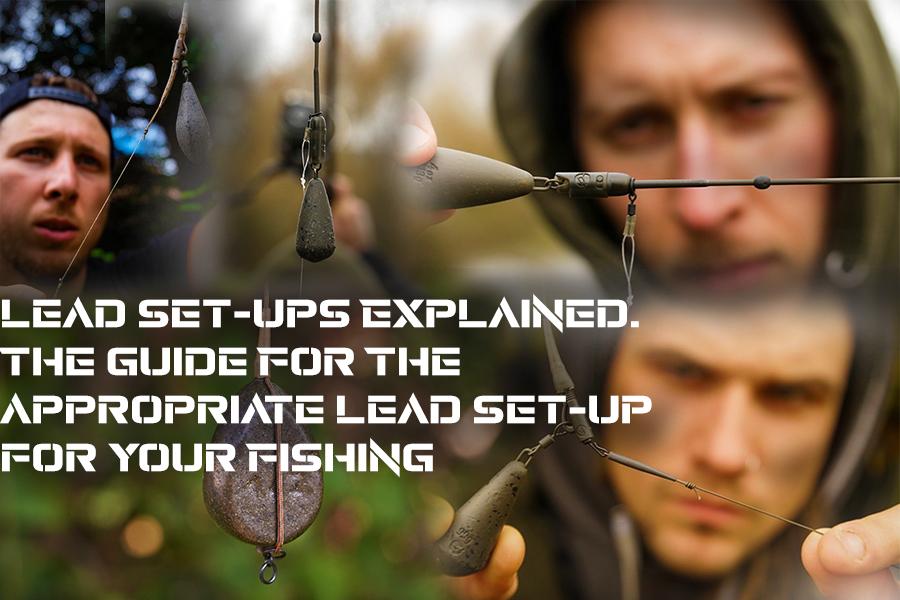Lead Set-Ups Explained. The Guide For The Appropriate Lead Set-Up for Your Fishing
In modern-day carp angling, lead set-ups are becoming more important to the carp angler. More anglers are commonly finding themselves in different fishing situations to what they’re used to, have it be presenting a rig on a different bottom, casting further or shorter or even just presenting a different rig.
Lead Clip
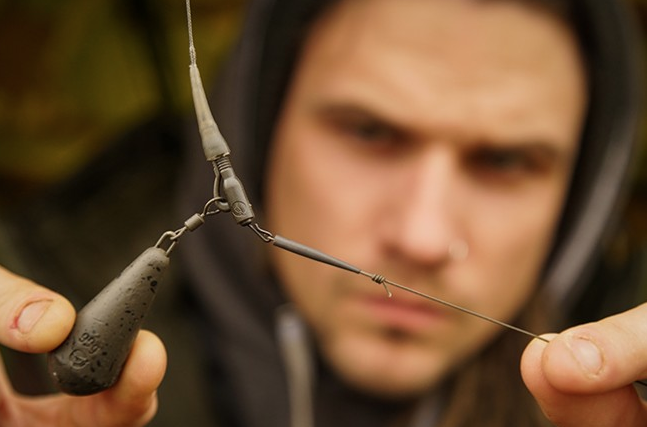
One of the most commonly used lead set-ups is the lead clip system. Initially designed for fishing over firmer areas such as clay, gravel or firmer silt. This set-up allows you to change your lead in seconds to suit different fishing scenarios as well as being able to drop your lead on the bite.
The lead clip contains three components for the set up. Firstly being the swivel which you will need so you can attach your hook link to the lead clip. Then theres the lead clip itself which features an arm which you thread your lead on to and a tail rubber which is pushed onto the arm to stop the lead from coming off the plastic arm on the cast. Always be sure to use the same branded tail-rubber as the lead clip, mixing brands may result in your leads not being dropped or the tail rubber not fitting over the lead clip properly (alternatively, PVA string can be used if you are dropping your leads). How easily the lead can be dropped is determined by how far the tail rubber is pushed on to the plastic arm. Some lead clips come with an inner swivel which can be tied to the end of the main line, whilst alternatively, some lead clips come with push-in pegs which is used to fix the lead clip to your swivel.
The lead clip set up is a fairly versatile set up as they are often used for distance fishing as well as margin fishing. With an anti-tangle sleeve, the lead clip set up is extremely tangle-proof, which makes it reassuring when casting your rig out. When using tubing or a leader with this set up, be sure to make sure your hook link is shorter than the leader/tubing to prevent the hooking wrapping around the mainline.
The lead clip set-up is also the best for zig rigs, not only can you instantly drop your lead, the fish comes straight into contact with the lead on this set up, securing a stronger hookhold which is vital when fishing zigs as the long hooklink can effect the self-hooking properties of the rig.
Because the hook link is attached directly to the lead clip, the hook link can still present above any shallow silt, even if the lead plugs into a soft lakebed. However, if the silt is too deep or there is low lying weed present, the lead clip is to be avoided as the lead will push down in to the weed / silt and will hinder the presentation of the rig.
Helicopter Set-up
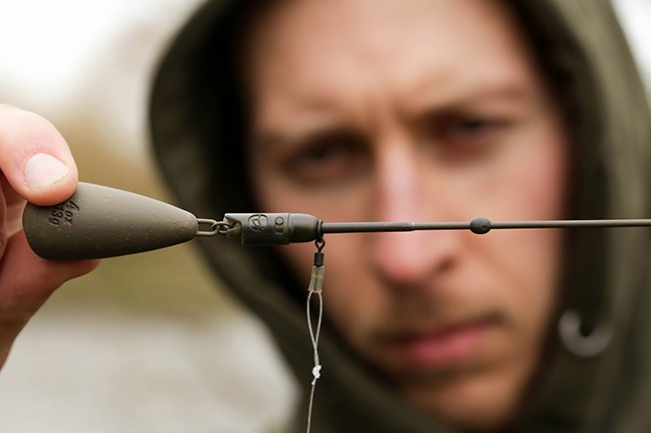
Arguably the best lead-setup for fishing over low-lying weed or silt, the Helicopter setup can be adapted to perfectly suit the lakebed you are fishing over. The nature of the Helicopter set up results in a very tangle-proof set up, making it ideal for distance fishing where you can be confident that your rig is presenting. As well as this, the helicopter set up is super easy to tieI've been using this lead set-up for my fishing for over a year now and it is perfect for the silty venues where the lead can plummet into the silt with the rig presented nicely on top of the silt. I personally use the Korda Heli-Safes when fishing helicopter set ups, which makes it easy to change my lead size or shape and I have the option to drop my lead or to not drop my lead.
To fish using the the helicopter set up, you need multiple components. To start with you need a leader of which you attach your chosen lead to with a knot followed by a sleeve which is pulled over the swivel of the lead. The sleeve allows the rig to move up and down the leader freely without buffering against the lead. The next component you will need is a quick change helicopter ring swivel, this threads on to the leader followed by a bead which controls how far the swivel can move up the leader. If your fishing in low-lying weed then you can move the bead further up the leader so that the rig sits on top of the weed.
However, if you are using a Korda Heli-Safe, then you simply tie the swivle of the Heli-Safe onto your mainline or splice it onto your leader. Then you can add your quick change helicopter ring swivel and the bead.
The helicopter set up can be used with zigs, however they are no where near as effective as a lead clip set up. You are likely to loose a fish as the fish won't come into contact with the lead as quick.
Inline set-up
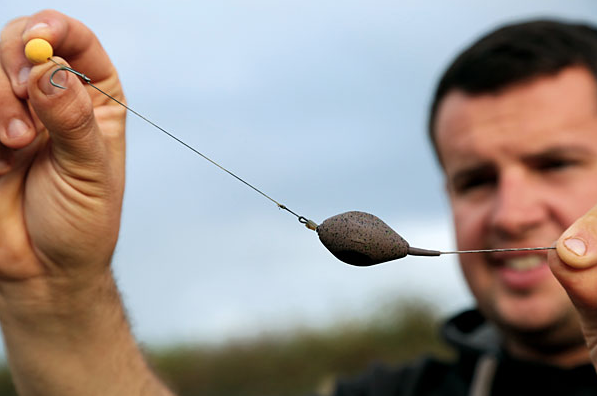
Inline leads are perfect for solid bag fishing and for your fishing in close on a hard spot. Using a drop - off inline can create deadly hook-holds when used in conjunction with a shorter rig. Due to the mechanics of the lead set up, the carp will feel resistance straight away creating an instant hooking connection. For this reason, inline leads are commonly used whilst stalking fish, where carp may be feeding shly in the edge.
To use and inline lead, you simply thread the lead on the leader so the swivel sits inside the lead, however if you want to fish a drop-off inline you only thread the tail-rubber of the lead on the leader, then you sit the swivel into the bottom of the lead and before threading the tail rubber onto the lead.
Unless you are using solid bags, it is best to avoid an inline setup when fishing in silt as the lead will plumet into the silt. As much as every lead set up will do this, it happens more serverly with inline leads. With the lead being connected directly to the hooklink, it is easy for the lead to bury the rig into the silt which would mean your rig completely out of veiw from a passsing carp and not presenting at all.
If you don't know what the lake bed is, then it's best to stay away from inline leads, just because they have a tendincy to sink into softer lake beds and will pull the rig down with it. This is will not present your rig. If you don't know the lake bed, then helicopter set ups are the most ideal as they can present over anything.
Running Rig Set-Up
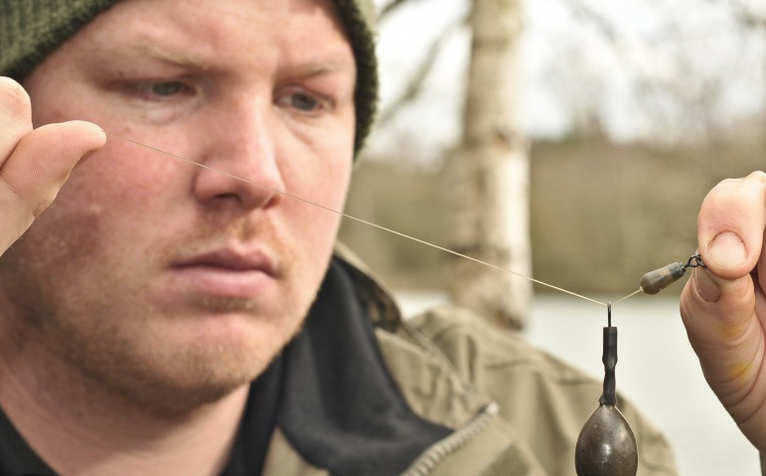
The running rig set up is perfect for winter. In winter, majority of the time the fish will be feeding subtley, meaning bite indication and sensitivity is key. During the winter, there is a lot less weed in the lake as well, and as well as snag fishing, the running rig is not suitable for fishing in weed. This is because the fish will not be towing the lead which means if the fish passes through weed or snags, you will have the lead one one side of the weed / snag and the fish on the other which will lead to a situation of tug-of-war that could quite easily cost you a lost fish. This lead set-up is perfectly safe though, the lead will run off the line and free itself in the situation of a snap off, it is just not the best for weedy/ snaggy enviroments.
To tie the running rig, you need a lead, a buffer bead, a split clip, a large plastic running ring, an anti-tangle sleeve and a swivel. Firstly, you want to attach the split clip to the running ring. The running ring is what runs across the line and hold the lead. After this, you want to attach your lead and anti- tangle sleeve to the split clip, the anti-tangle sleeve keeps the lead inplace on the split clip. After this you want to thread the running ring and then the saftey buffer bead onto your mainline / leader before splicing / tying the swivel onto the leader and sliding the buffer bead over.
If you use a Tadpole Bead instead of a saftey buffer, then you create semi fixed lead. The lead will com free from the bead after the bolt effect.
